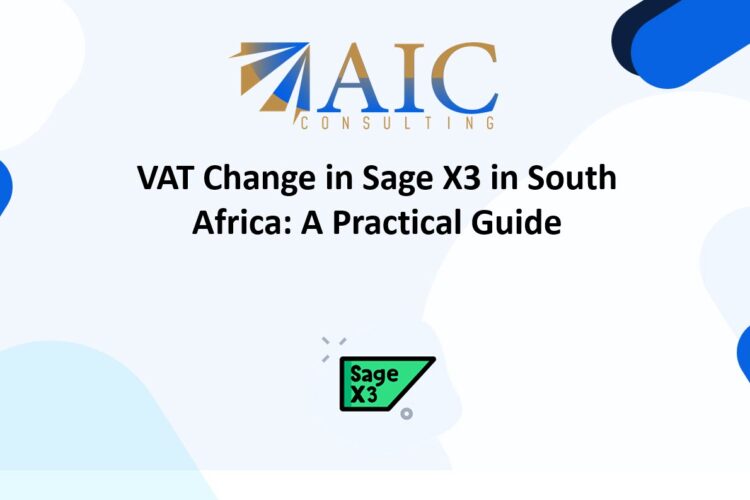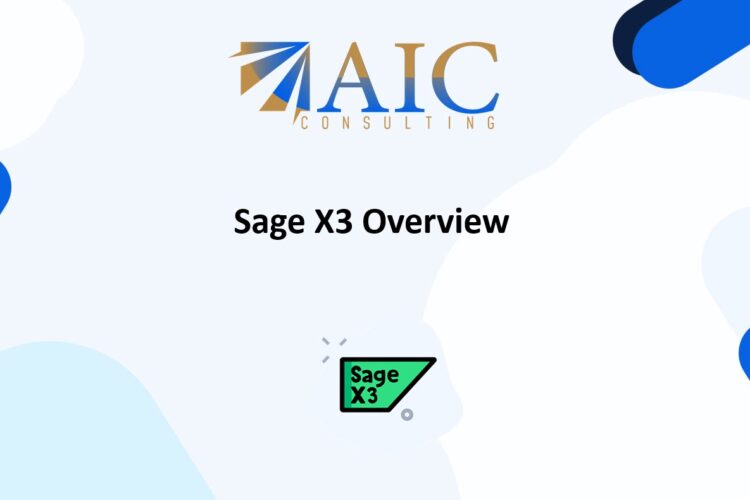Sage X3 is a comprehensive enterprise resource planning (ERP) software solution designed to help businesses manage their operations more efficiently. It offers a wide range of features and functionalities, including finance, distribution, manufacturing, and customer relationship management (CRM). Sage X3 pricing is primarily subscription-based and typically paid annually. However, before investing in Sage X3, it’s essential to understand the costs involved, particularly those associated with licensing. This blog post aims to provide a clear and concise explanation of Sage X3 Software Licensing Costs, making it easy for non-technical audiences to grasp the key factors that influence pricing.
Pricing Models for Sage X3 Licenses
While Sage primarily offers subscription-based licensing for Sage X3, perpetual licenses might be available in some situations. It’s best to contact Sage or a certified reseller to confirm the latest licensing options. Subscription-based licensing, also known as Software-as-a-Service (SaaS), provides businesses with more flexibility and cost-effectiveness, as they can scale the number of users up or down as needed and avoid a significant upfront investment.
Sage X3 employs a flexible pricing model that considers several factors, including the number of users, the types of licenses required, the modules and functionalities selected, the deployment option chosen, and the level of support and maintenance needed. Let’s explore some of the key elements that can influence Sage X3 Software Licensing pricing:
- Deployment Options: Sage X3 can be deployed on-premises, where the software is hosted on your own servers, or in the cloud, where you access it through the internet. The deployment option you choose can impact the overall pricing structure. On-premises deployments may involve higher upfront costs for server hardware and software licenses. Cloud-based deployments typically involve a subscription fee and can lower upfront costs but result in ongoing monthly or annual fees.
- User Licensing: Sage X3 pricing is primarily based on the number of users who need access to the system. The more users you have, the higher the licensing cost. Each user can be allocated a badge. Each badge comes at a different price, which we will explore below.
- Modules and Functionality: Sage X3 offers a wide range of modules that cater to specific business needs. These modules cover various areas such as finance, manufacturing, distribution, and more. The number and complexity of modules you require will influence the overall pricing, as each module may have separate costs associated with it.
- Customizations and Integrations: If you require extensive customizations or integrations with other systems, these can incur additional software license costs.
Subscription vs. Perpetual Licensing
Let’s explore the two main licensing models in more detail:
- Perpetual Licensing:
- Involves a significant upfront payment to purchase the software license outright.
- Typically includes an additional annual fee (often around 20% of the license cost) for maintenance, updates, and support.
- Offers long-term ownership of the software but requires a significant upfront investment.
- Grants the licensee the right to use the licensed material with a one-time upfront fee.
- Provides ownership and control, eliminating the need for ongoing subscription payments.
- Subscription-Based Licensing:
- Requires you to pay a regular (monthly or annual) fee to use the software.
- Offers more flexibility, allowing you to scale the number of users up or down as needed.
- Might be more attractive for businesses looking to spread out costs over time and assist with cashflow.
- No additional license cost to get the latest version Sage X3.
Understanding Sage X3 Badges
In addition to the factors mentioned above, Sage X3 uses a “badge” system to control access to specific functions within the software. Badges are assigned to user roles, and each badge represents a set of functionalities that the user can access. This system ensures that users only have access to the features they need, which can help optimize licensing costs.
For example, a “Full User” badge grants access to all functions within Sage X3, while an “Accounting User” badge only provides access to accounting-related functionalities. By assigning the appropriate badges to each user role, businesses can avoid paying for licenses with unnecessary features.
Types of Sage X3 Licenses (Badges)
Sage X3 offers various license types to cater to different roles and responsibilities within an organization. These licenses (Badges) determine the level of access and functionality available to each user. Sage X3 offers flexible licensing so you don’t have to pay for everyone as a full user. Here are the main types of Sage X3 licenses:
- Administrator: Designed for IT administrators who require access to security setup, maintenance, and database tools.
- Full User: Provides complete access to all functions within the Sage X3 application.
- Accounting User: Grants access to budgeting, accounting, and fixed assets transactions.
- Operational Distribution User: Allows access to inventory management, purchasing, and sales functionalities.
- Manufacturing User: Enables access to distribution and production capabilities.
- Transactional User: Permits users to input purchase order requisitions and expense entries.
- Mobile Warehouse User: Allows users to collect distribution and production data using handheld devices.
- Report Full User: Enables users to create and modify reports, dashboards, and insights.
- Report Viewer User: Allows users to view and consume reporting data, dashboards, and insights.
Estimated Cost Range for Sage X3 Licenses
Providing an exact cost for Sage X3 licenses is challenging due to the various factors involved. Please contact us to assist with the lastest prices.
Considering the Total Cost of Ownership
When evaluating the cost of Sage X3, it’s important to consider the total cost of ownership (TCO). The TCO encompasses not only the initial licensing or subscription costs but also factors in implementation, training, customization, support, and maintenance expenses over the software’s lifespan. Analyzing the TCO provides a more accurate picture of the overall investment required.
Optimizing Sage X3 Licensing Costs
Businesses can take several steps to optimize their Sage X3 licensing costs:
- Choose the right deployment option: Evaluate whether an on-premises or cloud-based deployment best suits your needs and budget.
- Optimize the number of users: Carefully assess the number of users who require access to Sage X3 and the types of licenses they need. Consider using concurrent user licensing if not all users need simultaneous access.
- Select only the necessary modules: Choose only the modules and functionalities that are essential for your business operations. Avoid unnecessary add-ons that can increase costs.
- Minimize customizations: While customizations can be valuable, try to minimize them to avoid excessive development costs.
- Buy different types of licenses to fit the needs of different employees and reduce licensing costs.
Additional Resources
Here are some additional resources that provide more information about Sage X3 licensing costs:
Conclusion
Understanding Sage X3 Software Licensing Costs is crucial for making informed decisions about your ERP investment. By carefully considering the factors that influence pricing, such as the number of users, modules, deployment options, and support requirements, businesses can optimize their licensing costs and ensure they get the best value from their Sage X3 solution. Remember to contact Sage or a certified reseller for a personalized quote based on your specific needs.


